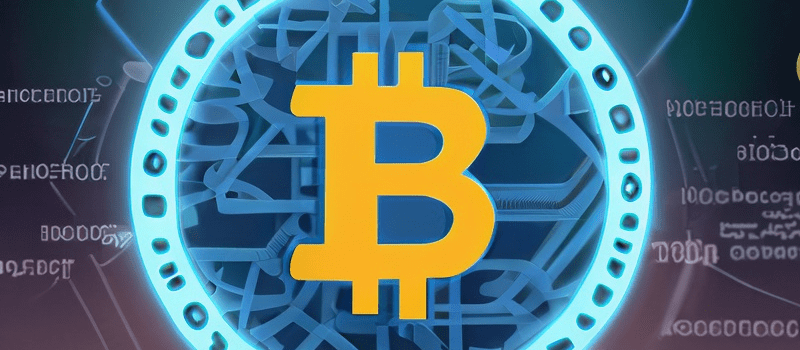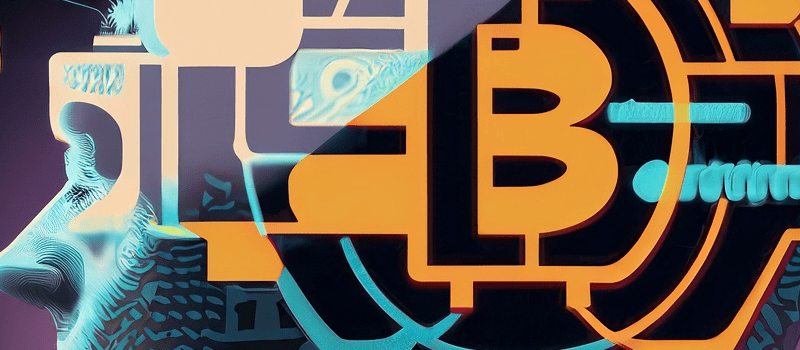Blockchain Dummies: A Beginners Guide

Blockchain Dummies: A Beginners Guide
Blockchain is a revolutionary technology that is transforming numerous industries. But what exactly is blockchain, and why is it so groundbreaking?
What is Blockchain?
At its core, a blockchain is a distributed digital ledger that records transactions in a verifiable and permanent way. It is:
- Decentralized – distributed across a network of computers
- Transparent – anyone can view the ledger
- Immutable – past records cannot be changed
- Secure – uses cryptography to keep data private
“Blockchain has the potential to disrupt nearly every industry including finance, real estate, healthcare, supply chain, voting, music, intellectual property and more.”
Some key properties of blockchain include:
- Consensus mechanisms like Proof of Work and Proof of Stake
- Use of hashing and digital signatures
- Incentives through block rewards
How Does Blockchain Work?
Here is a simple overview of how a blockchain network functions:
- A transaction is requested and broadcast to a peer-to-peer network
- Network nodes validate the transaction and compete to group transactions into blocks
- The next block is added to the existing chain through a consensus mechanism
- The transaction is complete once recorded in the chain
| Component | Description |
|---|---|
| Block | A group of transactions |
| Chain | Blocks linked together in an immutable sequence |
| Nodes | Network maintainers that store copies of the blockchain |
This decentralized process eliminates the need for third-party intermediaries. Now let’s dive deeper into the components and capabilities of blockchain.
How Blockchain Works
Blockchain architecture is complex and involves many advanced computing concepts. Here is a simplified explanation of the key technical elements of how blockchain works:
Distributed Ledger Technology
A blockchain is essentially a decentralized, distributed ledger that records transactions across a peer-to-peer network. Some key principles:
- Distributed – The ledger is shared and maintained by all nodes in the network
- Decentralized – No central authority controls the network
- immutable – Transactions cannot be altered or deleted
“Blockchain allows untrusted parties to agree on a common state without central control. It establishes truth through mass collaboration.”
Encryption and Hashing
Blockchain uses cryptographic techniques to secure data:
- Public/private key encryption enables digital signatures
- Hashing algorithms generate fixed-length digests of data
- Merkle trees efficiently summarize large data sets
These methods allow transparency while retaining user privacy on blockchain networks.
Consensus Mechanisms
Consensus mechanisms like Proof-of-Work and Proof-of-Stake allow agreement on the network’s state while preventing cheating or manipulation. For example:
- Proof-of-Work (Bitcoin) – Miners compete to solve puzzles to add the next block
- Proof-of-Stake – Validators stake funds to verify transactions and propose blocks
Consensus ensures new blocks are legitimate to maintain an accurate ledger.
Immutability and Transparency
- Transactions are permanent once recorded on the chain
- The ledger is visible to all network participants
These features establish trust and accountability without centralized control.
Let’s explore the key building blocks that enable these capabilities next.
Key Components of Blockchain
There are several technical components that enable a blockchain network to function securely and reliably:
Digital Signatures and Public/Private Keys
- Users have a public and private keypair:
- Public key acts as an address on the blockchain
- Private key allows users to digitally sign transactions
- Digital signatures certify that transactions are authorized
“Public and private keys are the keys to the kingdom of blockchain security.”
Nodes and Peer-to-Peer Networks
- Nodes run blockchain software and maintain copies of the ledger
- They form a decentralized peer-to-peer network to relay transactions
- Thousands of nodes provide resilience and redundancy
Mining and Block Rewards
- Nodes called miners group transactions into blocks
- Miners compete to add new blocks to the chain
- The network rewards miners for this service with crypto tokens
Smart Contracts
- Self-executing programs encoded on blockchain
- Automatically execute agreements between parties
- Enable many blockchain use cases like DeFi
These components work together to create a transparent yet secure decentralized system. There are also different types of blockchain networks…
Types of Blockchains
While most people are familiar with public permissionless blockchains like Bitcoin and Ethereum, there are actually different categories of blockchain networks:
Public vs. Private Blockchains
- Public blockchains – Anyone can join, read or write transactions
- Private blockchains – Access is restricted to certain participants
- Private networks prioritize efficiency, control and privacy
“Public blockchains offer full decentralization while private blockchains lean towards central control and censorship resistance.”
Permissioned vs. Permissionless
- Permissionless – Anyone can participate without identity verification
- Permissioned – Participation requires authorization
| Permissionless | Permissioned |
|---|---|
| Bitcoin, Ethereum | Hyperledger, Ripple |
| Fully decentralized | More centralized |
| Slower, more secure | Faster performance |
The type of blockchain determines its capabilities and use cases. Some major public blockchains:
- Bitcoin – Crypto payments
- Ethereum – Smart contracts
- Solana – High speed
- Polkadot – Interoperability
Private and permissioned networks also enable enterprise adoption.
Major Public Blockchains
Some of the most widely used public blockchain networks include:
-
Bitcoin – The first and largest cryptocurrency blockchain. It introduced innovations like distributed ledgers, consensus mechanisms, and the proof-of-work system.
-
Ethereum – An open-source blockchain platform that enables smart contracts and decentralized applications. Ethereum allows developers to build and deploy dapps.
-
Cardano – A proof-of-stake blockchain focused on scalability, sustainability, and interoperability. It supports smart contracts and decentralized apps.
-
Solana – A high-performance blockchain capable of 50,000 transactions per second. It uses proof-of-history and proof-of-stake consensus.
-
Polkadot – A sharded multichain protocol connecting private and public blockchains. It allows cross-chain composability at scale.
-
Algorand – A permissionless proof-of-stake blockchain focused on speed, security, decentralization, and scalability.
-
Avalanche – An open, programmable smart contracts platform claiming 4,500 transactions per second.
Blockchain Use Cases
Blockchain technology has a wide variety of applications across many different industries:
Cryptocurrencies
- Digital currencies like Bitcoin and Ethereum
- Global payment systems without intermediaries
- Decentralized finance (DeFi) applications
Supply Chain Management
- Track movement of goods end-to-end
- Prevent fraud and errors
- Improve transparency and accountability
Healthcare
- Securely share medical records
- Manage permissions to health data
- Track pharmaceuticals supply chain
Real Estate
- Tokenize property as digital assets
- Streamline transactions and paperwork
- Establish clear ownership records
Voting
- Cast and count votes immutably
- Prevent manipulation and fraud
- Maintain voter anonymity and security
“Blockchain has the potential to transform trade, businesses, government and society as a whole.”
Many industries are actively exploring blockchain adoption. However, there are some key limitations and challenges to overcome first.
Limitations and Challenges
While blockchain is a groundbreaking technology, it still has some key limitations and challenges to overcome:
Scalability
- Current networks have limited transactions per second (TPS)
- This restricts mainstream adoption for payments and apps
- Solutions being explored:
- Sharding
- Layer 2 scaling
- Alternative consensus models
“Scalability remains the major technical obstacle for blockchains like Ethereum.”
Privacy Concerns
- Sensitive data on public blockchains is transparent
- Private data could be exposed through analysis
- Approaches to improve privacy:
- Encrypted data
- Mixing protocols
- Zero-knowledge proofs
Energy Consumption
- Proof-of-work mining consumes enormous energy
- This raises environmental sustainability concerns
- Alternatives like proof-of-stake aim to reduce energy use
Regulatory Uncertainty
- Legal status of cryptocurrencies is ambiguous in many regions
- Lack of clear regulations stifles enterprise adoption
- Governments are still evaluating how best to oversee blockchain
Overcoming these challenges will accelerate mainstream blockchain adoption.
The Future of Blockchain
Despite current growing pains, the long-term potential of blockchain is tremendous. Here are some emerging trends and predictions:
Innovation and Investment
- Massive growth in blockchain startups and funding
- New consensus models, interoperability solutions, and scaling technologies
- Large enterprises actively piloting blockchain projects
“I believe we are still in the early innings of the blockchain revolution.” – Changpeng Zhao, Binance CEO
Mass Adoption
- Governments implementing blockchain for services like identity management
- Financial institutions using blockchain rails for faster payments
- Supply chains and healthcare systems adopting blockchain to track goods and data
Industry Disruption
- Cryptocurrencies challenging traditional banking and financial systems
- DeFi creating open-source alternatives to existing financial products
- Immutable ledger technology transforming record-keeping across domains
Societal Transformation
- Expansion of the open metaverse and web3
- Community governance through decentralized autonomous organizations
- Blockchain-enabled micropayments and crowdfunding models
The blockchain genie is out of the bottle. While the future is uncertain, its transformative impact seems inevitable.
Conclusion
Blockchain is an incredibly powerful and disruptive technology that is already changing the world. Key points:
- Blockchain enables a decentralized, transparent digital ledger secured by cryptography
- It eliminates third party intermediaries through distributed consensus mechanisms
- Applications range from cryptocurrency to supply chain tracking and beyond
- Blockchain faces challenges like scaling, but solutions are actively being developed
“The spread of blockchain will be akin to the spread of Internet in the early 1990s.” – Mohit Mamoria
Blockchain is still in its early stages, but its decentralized architecture could fundamentally transform:
- Finance
- Business
- Government
- Society
The full potential impact is still unknown. Those interested in blockchain should:
- Learn about the technology and stay up to date on new developments
- Think creatively about problems blockchain may help solve
- Explore building decentralized applications using platforms like Ethereum
Blockchain offers opportunities to disrupt established industries, create novel business models, and engage in financial innovation. The revolution is underway!




Responses